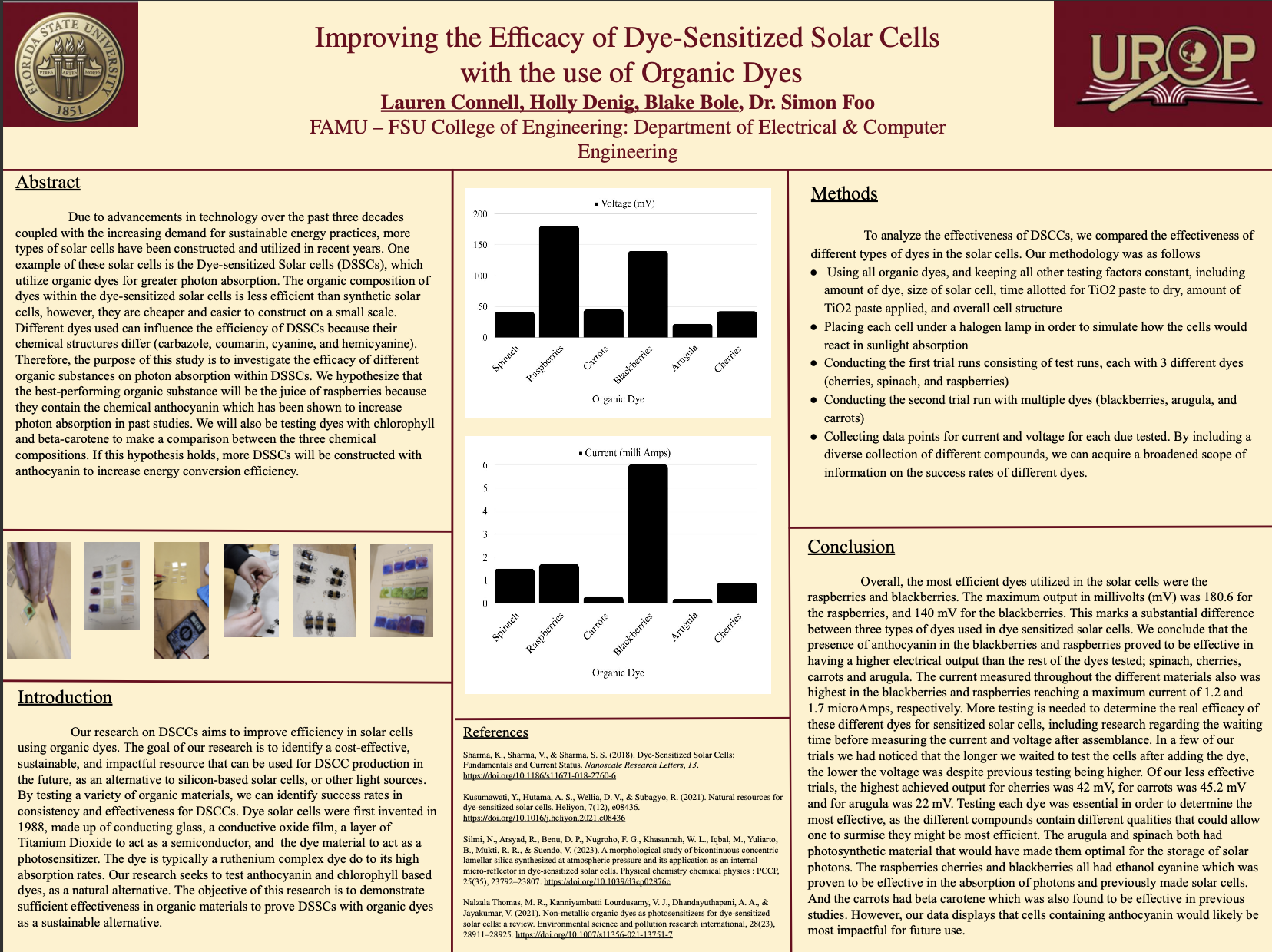Research Symposium
24th annual Undergraduate Research Symposium, April 3, 2024
Lauren Connell Poster Session 4: 2:45 pm - 3:45 pm /336

BIO
My name is Lauren Connell and I am a Sophomore IMS major from Naples, Florida. I hope to become a physician in the future and this goal is propelled by my love for science and math. I wanted to be a part of this UROP project because it allowed me to explore my interests in environmentally sustainable engineering, chemistry, and physics! I am part of the FSU Honors program, and the Honors Medical Scholars program at FSU, where I serve as the service chair for the organization. I am also an active member of several student clubs and organizations such as the being a senator on the FSU student senate, a race team member of the FSU sailing team, and a member of the Phi Delta Epsilon pre-medical fraternity.
Improving the Efficacy of Dye-Sensitized Solar Cells with the use of Organic Dyes
Authors: Lauren Connell, Simon FooStudent Major: IMS: Clinical Professions
Mentor: Simon Foo
Mentor's Department: Electrical and Computer Engineering Mentor's College: FAMU FSU College of Engineering Co-Presenters: Blake Bole, Holly Denig
Abstract
Due to advancements in technology over the past three decades coupled with the increasing demand for sustainable energy practices, more types of solar cells have been constructed and utilized in recent years. One example of these solar cells is the Dye-sensitized Solar cells (DSSCs), which utilize organic dyes for greater photon absorption. The organic composition of dyes within the dye-sensitized solar cells is less efficient than synthetic solar cells, however, they are cheaper and easier to construct on a small scale. Different dyes used can influence the efficiency of DSSCs because their chemical structures differ (carbazole, coumarin, cyanine, and hemicyanine). Therefore, the purpose of this study is to investigate the efficacy of different organic substances on photon absorption within DSSCs. We hypothesize that the best-performing organic substance will be the juice of raspberries because they contain the chemical anthocyanin which has been shown to increase photon absorption in past studies. We will also be testing dyes with chlorophyll and beta-carotene to make a comparison between the three chemical compositions. If this hypothesis holds, more DSSCs will be constructed with anthocyanin to increase energy conversion efficiency.
Keywords: Sustainability, Solar Cells, Renewable Energy, Environmental Engineering, Electrical Engineering


